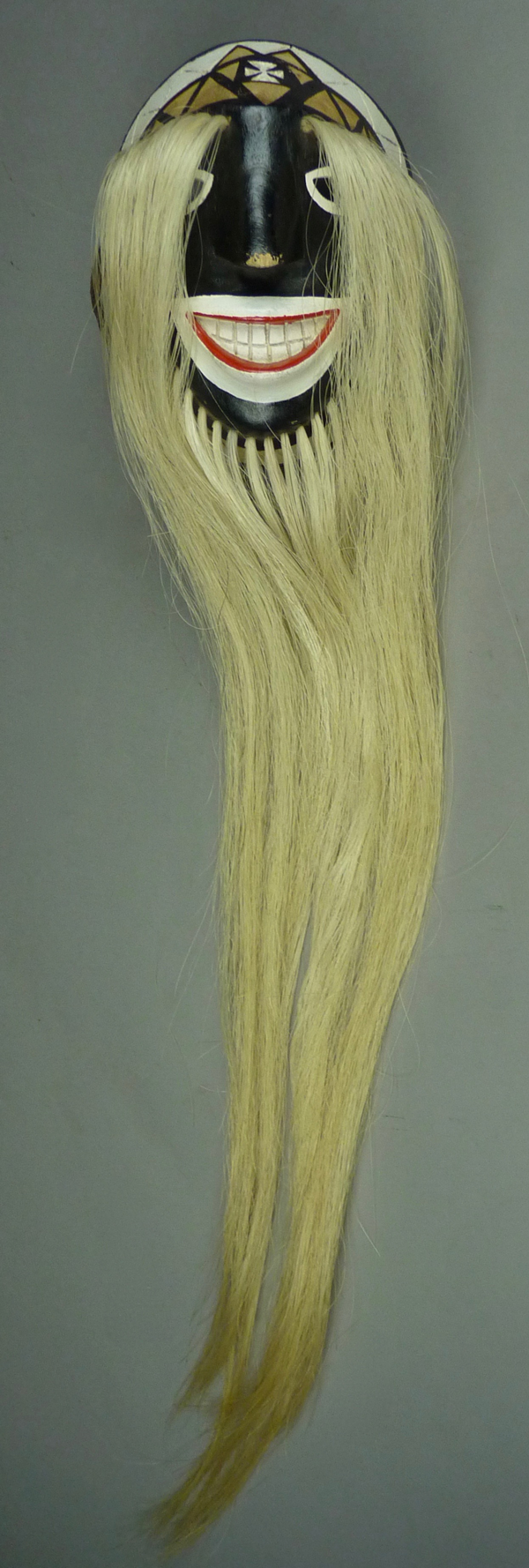I began this series of posts about Mayo Pascola masks from Sonora by examining the work of carvers who had been studied by James Griffith, back in 1965. Gradually we have been shifting towards other carvers and more recent masks. In last week’s post about masks with relief carved snakes we clearly ventured into the world of contemporary Rio Mayo carvers, and they will be the subject of the next few posts. Today I will begin with the contemporary carver whose masks introduced me to this group, back in 2010. As has often been the case, I learned about this artist from my friend Tom Kolaz, who said, “His artistry blows me away.” We agreed that we should buy some masks by this talented young man in order to encourage him to develop as an artist, and over the year that followed I purchased four undanced masks.
As it turned out, Cuco was stimulated by our support. He had already been making masks that were modeled on those of the last generation of carvers, such as Bonifacio Balmea, and this is the style that you will see in this post. However he also began to experiment more bravely with a modern style that appealed to Pascolas who were his contemporaries. These new-style masks were an immediate hit, and over just a few years Cuco became quite popular with these younger dancers, so much so that none of his most exciting masks ever came my way. I tell this not out of unhappiness, but to alert you that the masks in my collection are just the tip of the proverbial iceberg, and his recent masks are among the very best in the Mayo area.
Initially I didn’t even have a name for this carver, later I learned that his nickname was “Cuco,” and eventually Tom told me that his formal name is Refugio Hipólito Ruiz Quintero and that he lives in a very small town near Etchojoa, Sonora. I will call him Cuco. You will see that the artistry of Cuco’s carving speaks for itself. Here is one of the masks from that first group of four.

As I mentioned in earlier posts, the very long eyebrows and beards seen on Mayo Pascola masks in Sinaloa have gradually been adopted by the Rio Mayo carvers in recent years.
Continue Reading →




